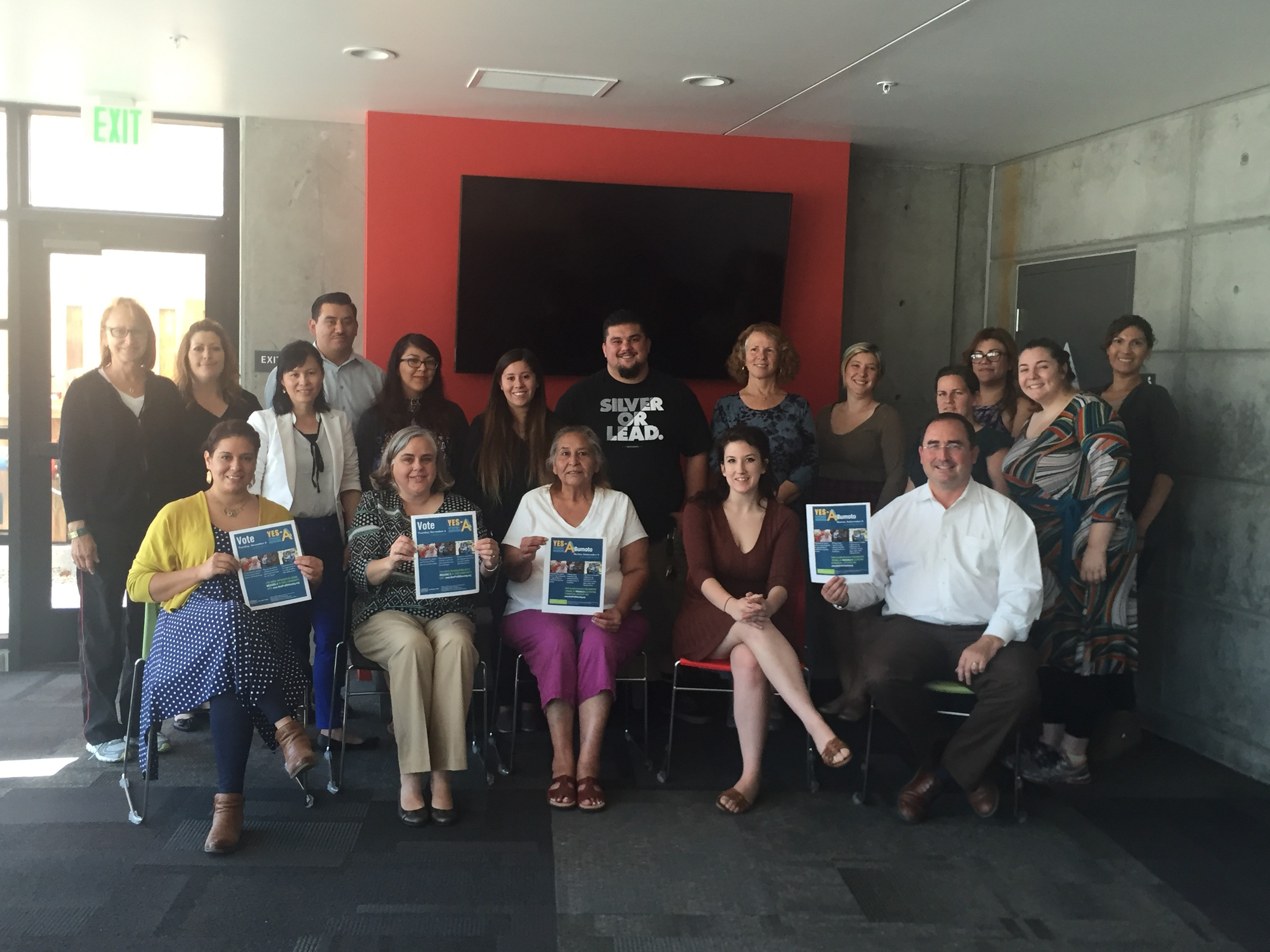The Importance of Voter Lists
Mar 23, 2018
by Sharon Cornu, consultant with Non-Profit Housing Association of Northern California
When you have something important to do, do you make a list? From buying groceries to running errands to planning a trip, most of us have learned the power of a good list.
A good list is also at the heart of a successful campaign. Advocacy campaigns for local ordinances rely on lists of people to attend hearings. Federal legislative campaigns rely on the NLIHC list of organizations to contact members of Congress.
In California, when we won three ballot measures in 2016, having a list of registered voters helped us win nearly $2 billion in new funding for affordable homes.
In fact, in Santa Clara County, where our margin of victory for a $950 million housing bond was just over 8,000 votes, we were so lucky that more than 10,000 residents of affordable homes turned out to the polls!
 San Jose resident services teams plan voter education and registration with
San Jose resident services teams plan voter education and registration withNPH in support of Measure A back in June of 2016.
But it wasn’t luck, it was organizing. We created a voter list using public data on subsidized addresses, matched to a high-powered commercial voter database. Due to campaigning with the most wonderful resident services teams on earth, residents increased their registration by 19%. Voter education materials were produced in seven different languages. It was getting these materials to low income voters that helped push Measure A across the finish line with a razor-thin margin of 1.2%. That was only possible with a good voter list.
To many organizers, the way we used the voter list was different. We didn’t dial phone numbers or bang on doors. We showed those wonderful resident services teams the number of residents registered at each of their properties. And then we let them work universal registration campaigns to update, re-register or register voters on properties. In some communities, resident councils or leaders managed the outreach; in others, registration was incorporated into ice cream socials, bingo, and aerobics.
Using the list this way landed us in a sweet spot with both accountability and privacy protection. It helped staff target the properties most in need. In 2018, the Residents United Network is taking the project statewide. They have identified more than 200,000 resident voters and will be building the list to pass a $4 billion statewide housing bond.